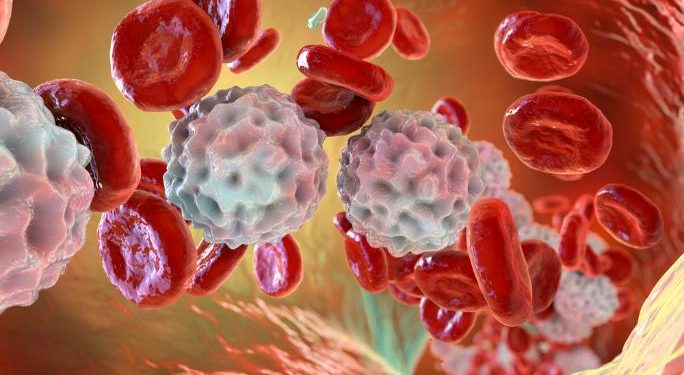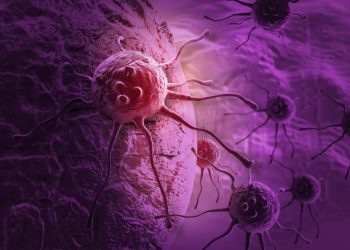After doing a physical exam and asking about your symptoms, your doctor will run several tests to determine whether or not you have non hodgkin’s lymphoma. These tests can also help your doctor know how fast the lymphoma is growing so they can plan treatment accordingly.
During a bone marrow aspiration or biopsy, your doctor will insert a needle into your hipbone to draw out fluid and tissue for testing. These procedures are usually performed under a local anesthetic.
Enlarged Lymph Nodes
Most lymphomas begin in the lymph system, a network of organs and tissues that hold infection-fighting white blood cells. One of the most common early symptoms is swelling (inflammation) of at least one of your lymph nodes in your neck, armpits or groin that doesn’t go away. These enlarged nodes may look like lumps or bumps. They usually feel tender when touched and might itch. Swollen lymph nodes can also be painless. Other early signs of non hodgkin’s lymphoma are fever that doesn’t go away, drenching night sweats and fatigue that won’t let up.
Your doctor will ask you about your symptoms and do a physical exam, including examining the areas where lymph nodes are located. Then your doctor will do a test to find out whether you have non hodgkin’s lymphoma.
If your doctor thinks you might have non hodgkin’s lymphoma, they will do a blood test to check for certain markers. The markers show if you have been exposed to the viruses that cause lymphoma, such as hepatitis B and hepatitis C. A blood test can also help your doctor figure out the stage of your lymphoma.
Some types of non hodgkin’s lymphoma grow quickly and might be dangerous if left untreated. These include diffuse large B-cell lymphoma (DLBCL) and follicular lymphoma. DLBCL grows in lymph nodes and often in the spleen, liver or bone marrow. It is the most common type of non hodgkin’s lymphoma. It’s sometimes called “B-cell lymphoma” or “diffuse large B-cell leukemia.” Follicular lymphoma occurs in lymph nodes and occasionally in the spleen, liver, bone marrow and skin. It’s usually a slow-growing type of lymphoma that doesn’t cause many symptoms.
If they suspect that you have one of these fast-growing types of non hodgkin’s, your doctor might also do a test to measure the fluid around your spinal cord (lumbar puncture or spinal tap). This procedure involves inserting a needle into the hipbone to take a sample of spinal fluid for testing. They might also use a biopsy of a lymph node to check for cancer cells and other signs of non hodgkin’s.
Chest Pain
A person who has lymphoma in the chest may develop pain or a feeling of pressure in his or her chest. This happens when tumors or swollen lymph nodes in the chest area squeeze the superior vena cava, which is a major vein that feeds blood from the head, arms and upper body into the heart. This causes blood to back up, which can cause the skin to look bluish-red in color and may cause breathing difficulties. This is called SVC syndrome and it’s a life-threatening sign of non Hodgkin lymphoma that needs to be treated right away.
Swollen lymph nodes that aren’t painful often don’t cause symptoms, but when they do, they usually include chest pain or a feeling of pressure in the chest. This is because swollen lymph nodes press against other tissues and nerves in the chest area, such as the lungs. Lymphoma that starts in the thymus or chest can also lead to difficulty breathing or coughing. Lymphoma that forms in the abdomen can cause a feeling of fullness or pain, as well as nausea and vomiting.
Other signs of non hodgkin’s lymphoma can include fever and loss of weight. The lymph system is a network of thin tubes that collects fluid from different parts of the body and returns it to the bloodstream. The neck, armpits, groin and other areas have clusters of lymph nodes. These bean-shaped glands produce immune cells and filter impurities from the blood. They also help fight infections and protect the body from disease.
When cancer develops in the lymph system, it affects all of the cells that form part of it. This is why lymphoma can spread throughout the body so quickly and can have many different symptoms.
It’s important to learn as much as you can about lymphoma so that you can recognize the symptoms and ask your doctor for an accurate diagnosis. You can also find support on sites such as MyLymphomaTeam, where people with lymphoma and their loved ones come together to ask questions and share experiences. You can also get information from your local health care provider and the Leukemia & Lymphoma Society.
Cough
If the lymphoma is in the chest, the thymus or lymph nodes in your chest may become enlarged and press on the windpipe (trachea). This can cause you to cough. Lymphomas in the spleen or stomach can also enlarge and lead to a cough. Lymphomas in the skin can also cause a cough. If you have plasmablastic lymphoma, a very aggressive type of large B cell non-Hodgkin lymphoma, the cancer cells can break apart and spread to other parts of your body. This can lead to a cough that gets worse.
Non-Hodgkin lymphomas start in lymphocytes, which are white blood cells that work with your immune system to fight infections. Some types of lymphoma begin in B cells, which normally make antibodies that fight bacteria and viruses. Others start in T cells or natural killer (NK) cells. These cells help B cells kill viruses and cancer cells and destroy cancerous cells that escape from your lymph nodes.
If your immune system is weakened by a chronic infection, such as tuberculosis, HIV or another disease, you have a higher risk of developing non-Hodgkin lymphoma. Certain genetic conditions, such as Wiskott-Aldrich syndrome or severe combined immunodeficiency, can also increase your risk of developing lymphoma. Exposure to some workplace chemicals, such as herbicides and insecticides, can increase your risk.
People who are exposed to high levels of pesticides on a regular basis are at an increased risk for developing lymphoma, especially in males and those older than 60. However, some research shows that a weakened immune system is not always the cause of lymphoma.
If you have a slow-growing lymphoma, such as mantle cell or marginal zone lymphoma, your doctor may recommend a period of watchful waiting. This means you will not get treatment right away but will have checkups every few months to see whether the lymphoma is getting worse. If it does, you might receive chemotherapy or other medicines to kill cancer cells. You might also receive radiation therapy to kill any remaining cancer cells and prevent them from spreading. Other medicines can also be used to reduce your symptoms.
Persistent Fatigue
A lingering, unexplained feeling of tiredness can be one of the first symptoms of non hodgkin’s lymphoma. If you’re experiencing this symptom, talk to your doctor about it. They may suggest a medical test to look for lymphoma cells in your blood or in the fluid around your spinal cord (lumbar puncture).
The process used to find out how far cancer has spread in your body is called staging. This information is important for planning your treatment.
Non-Hodgkin’s lymphoma develops in the lymphatic system, a network of vessels and glands throughout your body. Clear fluid called lymph flows through the lymphatic vessels and contains infection-fighting white blood cells, called lymphocytes. When a non-Hodgkin’s lymphoma forms, the lymphocytes grow in an abnormal way and begin to collect in certain areas of your body, such as the lymph nodes in your neck, armpit or groin.
There are many different types of non-Hodgkin’s lymphoma. Some grow and spread fast, while others grow and spread slowly. They can also be classified as indolent or aggressive.
Diffuse large B-cell lymphoma (DLBCL) is the most common type of non-Hodgkin’s. It usually starts in the lymph nodes, but can also affect the spleen, liver and bone marrow. Symptoms of this type of lymphoma include fever, drenching night sweats and fatigue.
Your healthcare team will use a variety of tests to diagnose non-Hodgkin’s lymphoma and determine its stage. The most important test is a physical exam. Your doctor will feel your lymph nodes and check for any enlarged ones. They will also take a tissue sample from one of your swollen lymph nodes to check for non-Hodgkin’s lymphoma cells.
The blood tests and the lymph node biopsy help your healthcare provider find out the type of non-Hodgkin’s, its stage and whether it has spread to other parts of your body. They will then plan the best treatment for you.
Learning as much as you can about your illness and its treatment will empower you to make decisions that are right for you. Talk to your doctor about this and explore resources, such as the National Cancer Institute and the Leukemia & Lymphoma Society. It’s also a good idea to maintain a strong support system. These people can be helpful in a practical way, such as helping with housework and caring for children, and emotional ways, like encouraging you when you’re down.









